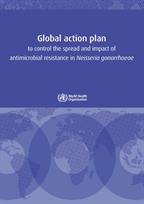
The Gonococcal Antimicrobial Surveillance Programme (GASP)
The WHO GASP network
High quality and representative gonococcal antimicrobial resistance (AMR) data is imperative to monitor AMR trends, identify emerging AMR, and inform refinements of global, international and national clinical management guidelines and public health policies. The WHO Global Gonococcal Antimicrobial Surveillance Program (GASP) has been documenting the emergence and spread of AMR in gonorrhea globally since 1992.
The GASP is a worldwide laboratory network coordinated by focal points and regional coordinating centres. Each designated regional focal point, in partnership with its WHO regional office, collates data on patterns of antimicrobial susceptibility in gonorrhoea in participating countries.
Objectives of the WHO GASP
- To ensure adequate sentinel surveillance of antimicrobial resistance in order to inform treatment guidelines in all countries.
- To establish a strategy to rapidly detect patients with gonococcal infections, who experience a clinical and/or microbiological treatment failure following treatment with recommended cephalosporin therapy.
- To ensure the effective clinical management of infected patients and their sexual partners.
Enhanced Gonococcal AMR Surveillance Programme
In order to have accurate and comparable data globally and detect emerging resistance, gonococcal culture-based AMR monitoring needs to be standardized and linked to clinical and epidemiological data. The Enhanced Gonococcal Antimicrobial Surveillance Program (EGASP) is a focused sentinel surveillance, where men presenting with urethral discharge are consecutively identified in sentinel sites and clinics. By the end of 2023, EGASP was implemented globally in 10 countries from the majority of WHO Regions.
Tools are available to facilitate the implementation and expansion of EGASP including the generic EGASP protocol. Supplemetary protocols include treatment failure protocol, extragenital surveillance, and whole-genome sequencing framework.
The first global report on EGASP data (2015-2022) is published: Enhanced gonococcal antimicrobial surveillance programme (EGASP): surveillance report 2022
Data
Latest figures
Scientific articles
Publications

Enhanced Gonococcal Antimicrobial Surveillance Programme (EGASP): surveillance report 2022
The WHO Enhanced Gonococcal Antimicrobial Surveillance Programme (EGASP) was developed to address many of GASP’s limitations and strengthen sentinel...

Enhanced Gonococcal Antimicrobial Surveillance Programme (EGASP): supplementary protocols
Widespread antimicrobial resistance (AMR) in highly variable strains of Neisseria gonorrhoeae continues to cause significant public health concerns and...

The Enhanced Gonococcal Antimicrobial Surveillance Programme (EGASP) aims to strengthen sentinel surveillance for gonococcal antimicrobial resistance (AMR)...

Report on global sexually transmitted infection surveillance 2018
Globally, more than 1 million curable sexually transmitted infections (STIs) occur each day. According to WHO global estimates for 2016, there were roughly...

Gonorrhoea is a major public health challenge today, due to the high incidence of infections accompanied by a dwindling number of treatment options. The...


